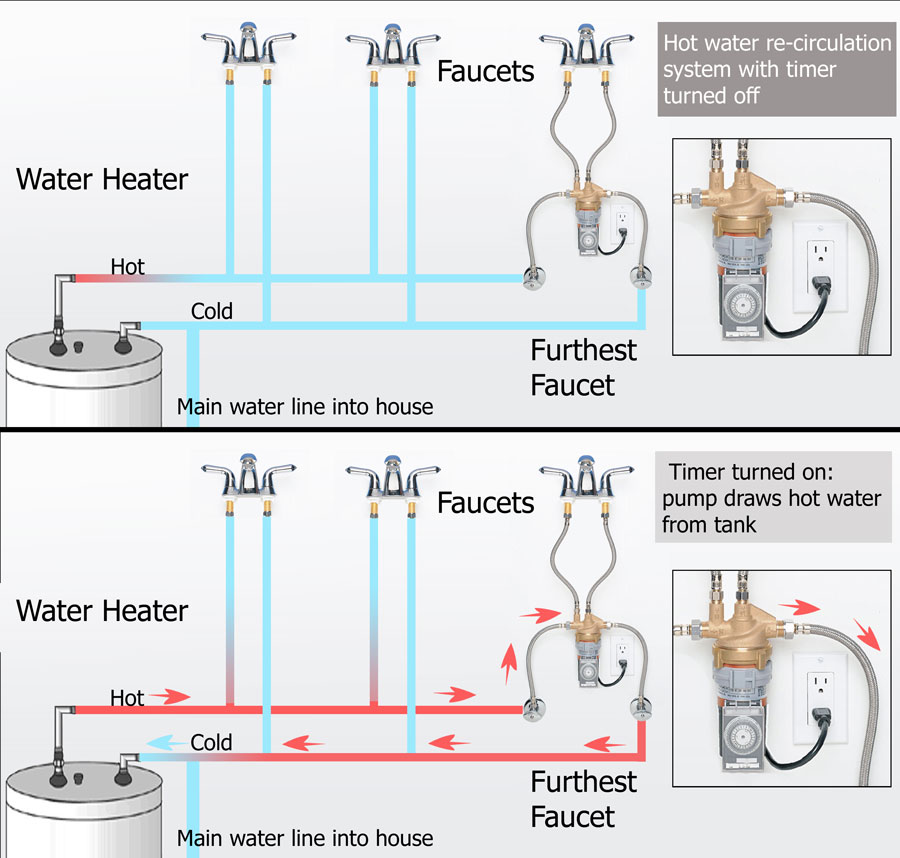jmed999
Active Member
I have a Noritz gas tankless water heater. I'm wanting to put in a recirculation pump so we have fast hot water throughout my home. It looks like there are 3 methods and I'm not sure what the pros and cons are of each. The method chosen will be controlled via my HA system (Insteon/ISY)
1st Method: My plumber told me an easy way is to use a pump under the farthest sink and connect the hot and cold water lines there. For this method I would have to use a button, motion detection, etc. I'm not sure I would like to have to activate the pump every time I need it.
2nd Method: This method is called out in the Noritz instruction manual and utilizes a hot water return line. The hot water return line would start at the furthest point on my hot water system and tie back into the Cold water line but not under the sink like Method #1. This system would use a pump, 8-10 gallon storage tank, auquastat etc.
3rd Method: This method is similar to the 2nd method. It would also use a hot water return line starting at the furthest point in my hot water system but it instead ties back to the hot water system. Basically, the hot water line would come from the tankless gas water heater to an electric 2-6 gallon water heater then to the various outlets, then to the pump. After the pump the hot water would tie back into the hot water pipe just before the electric tank. This method would be a hot water loop only and not tie back to the cold water line like the 1st two methods.
I would like to control the system I go with using my HA system (Insteon, ISY, ELK M1G) ie. turn off when the house alarm is armed away and between 12AM and 5AM, etc.
What is the best method? Which is more economical? Which would provide faster hot water? I only have one shot at this so I want to install the most optimum system for my home.
Thanks for your help!
1st Method: My plumber told me an easy way is to use a pump under the farthest sink and connect the hot and cold water lines there. For this method I would have to use a button, motion detection, etc. I'm not sure I would like to have to activate the pump every time I need it.
2nd Method: This method is called out in the Noritz instruction manual and utilizes a hot water return line. The hot water return line would start at the furthest point on my hot water system and tie back into the Cold water line but not under the sink like Method #1. This system would use a pump, 8-10 gallon storage tank, auquastat etc.
3rd Method: This method is similar to the 2nd method. It would also use a hot water return line starting at the furthest point in my hot water system but it instead ties back to the hot water system. Basically, the hot water line would come from the tankless gas water heater to an electric 2-6 gallon water heater then to the various outlets, then to the pump. After the pump the hot water would tie back into the hot water pipe just before the electric tank. This method would be a hot water loop only and not tie back to the cold water line like the 1st two methods.
I would like to control the system I go with using my HA system (Insteon, ISY, ELK M1G) ie. turn off when the house alarm is armed away and between 12AM and 5AM, etc.
What is the best method? Which is more economical? Which would provide faster hot water? I only have one shot at this so I want to install the most optimum system for my home.
Thanks for your help!


